Preparedness
Armed Teen Carjacker Meets Match in Sotomayor’s Security Officers

"Sonia Sotomayor & Mary M. Schroeder" by Gage Skidmore is licensed under CC BY-SA 2.0 .
In a grave incident that unfolded recently, Deputy U.S. Marshals tasked with Justice Sonia Sotomayor’s security were forced to discharge their service firearms in response to an armed carjacking attempt. The event took place in the early hours of a past Friday, just outside Sotomayor’s residence in Washington D.C.’s Beauregard Condominiums complex.
The Marshals, situated in unmarked vehicles, were taken aback by the sudden appearance of an armed male suspect who emerged from a silver minivan around 1:15 a.m.
The suspect, brandishing a firearm, targeted a Deputy U.S. Marshal named only as “Black” in the reports. According to the Daily Mail, the suspect demanded Black’s vehicle. A chilling quote reflected the severity of the situation: “In most U.S cities, juveniles spend the summer hanging out with their friends, working summer jobs, visiting family members. In DC, juveniles carjack.”
Reacting to the threat, Black drew his service weapon and fired multiple shots at the suspect. One of these rounds reportedly hit the suspect in the mouth, causing significant injury but not posing a threat to his life.
A second Deputy Marshal was also involved in the incident, exiting his vehicle and discharging his firearm. Whether any of his shots connected with the suspect remains uncertain. After the altercation, Black provided first aid to the wounded suspect, later identified as 18-year-old Kentrell Flowers of Washington D.C.
Flowers was promptly transported to a nearby hospital to treat his non-life-threatening injuries. His apparent accomplice, however, did not remain at the scene. The silver van absconded northbound on 11th Street Northwest shortly after the shooting, as stated in a fact sheet filed in D.C. district court by Deputy U.S. Marshal Tyler Wells.
Despite efforts to locate the accomplice, the secondary suspect remains unidentified. Officers did recover a .40 caliber Smith & Wesson – the weapon allegedly used in the carjacking attempt. Thankfully, no Marshals were harmed in the face-off.
Flowers now faces charges of armed carjacking, carrying a pistol without a license, and possessing a large-capacity ammunition-feeding device. Investigations around the incident are ongoing.
Interestingly, initial statements from the Metro PD about the Marshal-involved shooting omitted that it unfolded near Justice Sotomayor’s residence. As the Daily Mail reported, her D.C. condo is a two-bedroom, two-bath property valued at over $860,000.
Sotomayor had once compared her residential neighborhood to New York’s East Village. She told the New York Times, “It has a touch of the East Village in it… I picked it because it’s mixed. I walk out and I see all kinds of people, which is the environment I grew up in and the environment I love.”
The U.S. Supreme Court’s public information officer did not respond to Blaze News when asked for a statement regarding the incident.
Former D.C. official K. Denise Rucker Krepp, who previously worked under the Obama administration, expressed her exasperation at the ongoing violence involving juveniles in the district. Speaking to Blaze News, she stated, “Washington DC, the District of Crime, has a juvenile carjacking problem… As was demonstrated last Friday, no one is safe from juvenile carjacking in the nation’s capital.”
Let us know what you think, please share your thoughts in the comments below.

Preparedness
Master Weather Prediction With These Tips
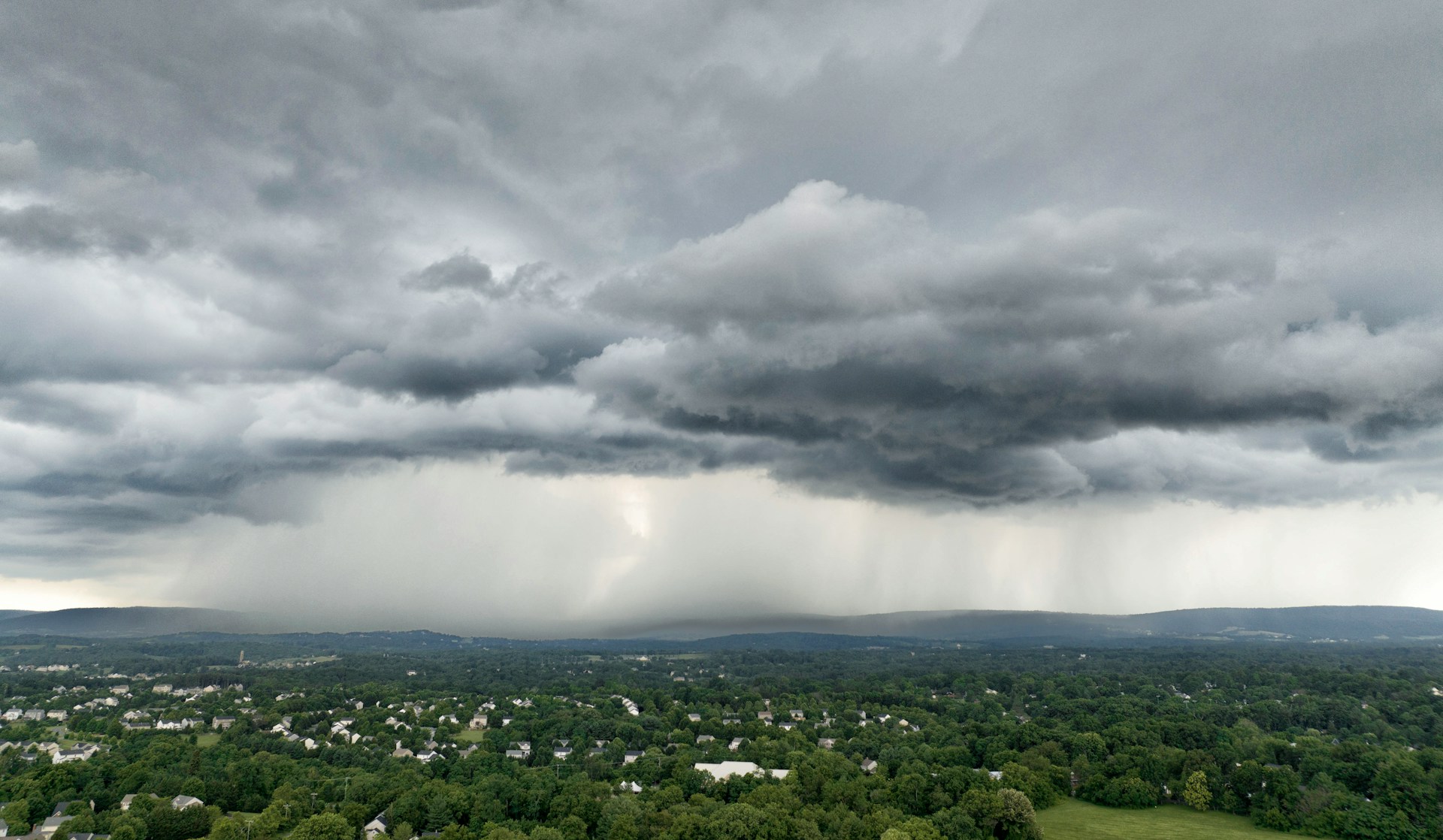
For those who live off the land, understanding the weather is not just a matter of convenience but a vital skill. Homesteaders and survivalists often rely on nature’s cues to predict the weather, allowing them to prepare for whatever conditions might arise. Here are five time-tested methods to forecast the weather, just like the mountain men of old.
Understanding atmospheric pressure is fundamental to predicting weather changes. Many natural phenomena, such as wind and rain, are directly influenced by shifts in air pressure. For those familiar with their local climate, gauging atmospheric pressure can provide significant insights into upcoming weather patterns.
One way to measure atmospheric pressure without modern gadgets is by constructing a simple barometer. This can be done using an empty bottle and a bowl of liquid, like oil. By placing the bottle upside-down in the liquid, you can observe changes: rising liquid indicates increased pressure, while falling liquid signals a drop in pressure.
If you lack these materials, starting a fire can also help assess atmospheric pressure. “If the smoke from your fire travels upward in a straight column, then air pressure is low. If falls and hovers around your camp, air pressure is high.”
Cloud observation is another ancient technique for weather prediction, offering clues up to a day in advance. Different cloud types provide different forecasts. Cirrus clouds, which are white and wispy, suggest fair weather. Cirrostratus clouds, on the other hand, indicate moisture is likely within the next 12 to 24 hours. Altostratus and altocumulus clouds both warn of impending storms, with altocumulus often preceding a storm by just a few hours. In contrast, stratocumulus clouds, which are fluffy, signal dry weather ahead. If nimbostratus clouds blanket the sky in gray, it’s probably already raining.

Wind movement is another straightforward way to gauge weather changes. Observing tree branches or simply feeling the wind with your finger can provide valuable insights. Strong winds typically result from significant pressure changes and often precede storms, whereas gentle winds suggest more stable conditions. The direction of the wind also holds clues, though these vary by region. In some areas, a westerly wind indicates fair weather, while an easterly wind might bring rain. It’s crucial to understand local wind patterns to make accurate predictions.

The moon offers another natural indicator of weather changes. A halo around the moon signifies dust particles in the atmosphere, which can herald moisture from a low-pressure system. Similarly, twinkling stars suggest a drop in air pressure. “The twinkling gets stronger when there’s a dip in air pressure,” and humid air can also enhance this effect.

Certain plants have evolved to sense and respond to weather changes, providing another tool for weather prediction. Some flowers remain closed when rain is imminent, while others, like the African Marigold, adjust their opening and closing times based on approaching rain. Observing these natural behaviors can provide early warnings of changing weather conditions.

Mastering these techniques can significantly enhance one’s ability to predict the weather, a critical skill for anyone living close to nature. By honing these methods, you can better prepare for whatever the elements might bring.
Let us know what you think, please share your thoughts in the comments below.
Preparedness
Security Secrets To Safeguard Your Home and Family

While we’d like to think of our homes as sanctuaries removed from societal dangers, the reality is quite different. The U.S. Department of Justice highlights that “Property crime is actually more likely in rural areas than suburban areas.” This increased risk is often due to the remoteness and slower police response times associated with rural living.
To safeguard your property and family, proactive measures are essential. One of the most straightforward and effective deterrents is having a dog. The presence of a dog, whether large or small, can discourage potential intruders. Sometimes, even a “Beware of Dog” sign can be enough to make a burglar think twice.
Lighting is another crucial element of homestead security. Motion-activated lights positioned near entryways and pathways can startle intruders and animal predators alike, providing protection for both your family and your livestock.
Investing in a security system is a wise choice for any homesteader. These systems come in various price ranges, catering to different needs and budgets. For those with limited funds or unreliable internet, battery-operated door and window alarms offer a practical alternative. Video surveillance, too, acts as both a deterrent and a means of gathering evidence should an intruder make their way onto your property.
Perimeter fencing is indispensable. It serves as a physical barrier, keeping animals in and unwanted visitors out. To enhance its effectiveness, ensure gates are lockable. A gate at the end of your driveway requiring visitors to buzz in can add an extra layer of protection.
In a charming anecdote from the Daily Yonder, Donna Kallner recounts, “[Our security system] was never quite as effective as my grandparents’ rural security system: Their farm was at the end of a gravel lane that had to be more than a half-mile long. About halfway down it, there was a big tree where a flock of guinea fowl perched. Any time a vehicle got that far those birds kicked up a ruckus.” While not everyone has guinea fowl, a driveway alarm with wireless monitoring can serve a similar purpose by alerting you to approaching visitors.
Complacency can lead to security oversights. It’s tempting to leave keys in tractors or garages, but this can make expensive equipment easy targets for theft. Ensuring your garage doors are secure is a worthwhile investment, as it prevents costly replacement of stolen items.
A safe is a must-have for any homestead, particularly a fireproof one for safeguarding important documents and valuables. To enhance door security, consider additional measures like deadbolts or door chain stoppers, offering extra time to react in case of an intrusion.
Strategic planting can also bolster security. Thorny plants around the perimeter and spiky bushes beneath windows create natural barriers that deter intruders. Additionally, using pea gravel on walkways can alert you to movement with its distinctive crunch underfoot.
Clear signage is vital, especially in areas frequented by hunters. Posting property markers and signs indicating video surveillance can discourage trespassers. Maintaining an appearance of occupancy is another effective strategy. Keeping a vehicle in the driveway, setting lights on timers, and ensuring the lawn is mowed can all suggest that someone is home.
Finally, fostering a good relationship with neighbors can be invaluable. They can help maintain your property’s appearance when you’re away and keep an eye out for any suspicious activity.
Incorporating these strategies into your homestead security plan can make a significant difference in protecting your property and loved ones.
Let us know what you think, please share your thoughts in the comments below.
Preparedness
Master Winter Power Outages with Essential Prep Tips

When winter storms strike, power outages can be a common, albeit inconvenient, occurrence. However, with a bit of foresight and preparation, you can mitigate the discomfort of these short-term disruptions. The key is to have a plan in place before the lights go out, ensuring that you’re not left scrambling in the dark for essentials like light sources, heat, and food.
A well-prepared “blackout” kit is your first line of defense against the chaos of a power outage. This kit, which can be stored in a bag or tote, should be easily accessible even in the dark. While your cell phone’s flashlight might be a handy tool, relying on it can quickly drain your battery. Therefore, it’s crucial to know how to reach your blackout kit without incident.
Light is a primary concern during any power outage. Your kit should include a variety of lighting options, such as flashlights and headlamps for hands-free use, and a lantern for omni-directional illumination. “At least one flashlight and headlamp per person is recommended.” For families with children, glowsticks can add a bit of fun to the situation. If space allows, solar-powered lighting is a sustainable option, though it may not be feasible for apartment dwellers with limited sunlight exposure. Importantly, candles should be avoided due to the fire hazard they pose, as demonstrated by a tragic incident involving an elderly neighbor during an ice storm.
Having extra batteries for all your flashlights is essential. There’s nothing worse than discovering a dead flashlight when you need it most. Aim to store at least one extra set of batteries, or better yet, two. Limiting your devices to one or two battery types can simplify this process. For an added layer of preparedness, consider including a solar charger and rechargeable batteries in your kit.
In addition to lighting, a combustion device like matches, a BBQ lighter, or a simple BIC lighter is useful, especially if you have a gas stove that may require manual ignition. These items are also handy for heating and cooking, which we’ll explore further.
Staying informed during a power outage is crucial, so a battery-operated or wind-up radio should be part of your kit. “A hand-cranked combo unit that gives you light, USB charging plus a radio too would be a good choice.” This not only keeps you updated on the situation but also provides a morale boost by connecting you to the outside world.
For longer outages, heating becomes a priority. Ideally, a wood stove installed beforehand can address both heating and cooking needs, provided you have a wood supply. If that’s not an option, a fireplace can offer some warmth, though it’s less efficient. To conserve heat, close all vents and doors, and minimize trips outside. Selecting a single room, such as a master bedroom, for everyone to gather can also help retain warmth. Block drafts with towels and cover windows or glass doors with plastic sheeting.
Dressing in layers is crucial for maintaining body warmth. “Warm socks that go up above the calf but that aren’t tight are recommended,” and wearing a stocking hat can further reduce heat loss. For families without a suitable room, “camping” in the living room can be an adventurous alternative, complete with tents or blanket forts.
Sleeping bags are invaluable for keeping everyone warm, and if they’re compatible, zipping two together allows for shared body heat. Don’t forget about your pets, who can also contribute to warmth. For pets in cages or aquariums, wrapping their enclosures with blankets can help conserve heat, and a battery-operated heater or bubbler is a wise investment.
While candles can provide some warmth, they should never be used while sleeping. Instead, portable, non-electric space heaters are a safer option. Ensure any propane heaters are rated for indoor use to avoid carbon monoxide buildup, and always maintain proper ventilation. A working carbon monoxide detector is a must when using any combustion-based heating.
Cooking during a power outage requires some creativity. If you have a wood stove, fireplace, or gas range, you’re in luck. Otherwise, a BBQ or camp stove can be used in a well-ventilated area like a garage with the door partially open. It’s critical to avoid using charcoal or kerosene indoors due to the rapid buildup of CO2.
For indoor cooking, a sterno or “canned heat” stove is a safe bet. These canisters burn long enough to prepare simple meals like scrambled eggs or heated soups. Alternatively, a denatured alcohol stove provides clean-burning heat without the risk of gas leaks, though it requires cooling before refueling.
By organizing and storing your supplies in an easily accessible location, you can significantly ease the stress of a short-term power outage. With a bit of planning, you can also expand your preparations for longer-lasting disruptions, ensuring you’re ready for whatever winter throws your way.
Let us know what you think, please share your thoughts in the comments below.
-
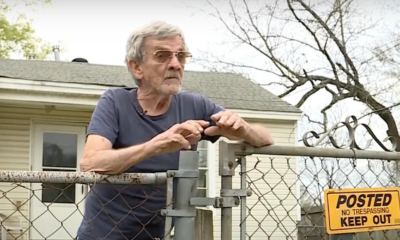
 Tactical9 months ago
Tactical9 months ago70-Year-Old Fends Off Intruder with Lead-Powered Message
-

 Preparedness6 months ago
Preparedness6 months agoEx-Ballerina’s Guilty Verdict Sends Tremors Through Gun-Owner Community
-
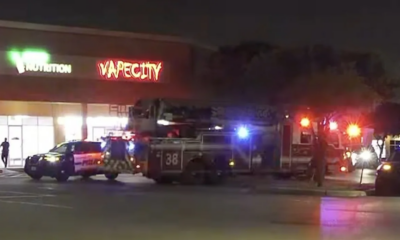
 Tactical9 months ago
Tactical9 months agoVape Shop Employee Confronts Armed Crooks, Sends Them Running
-

 Preparedness4 months ago
Preparedness4 months agoGood Samaritan Saves Trooper in Harrowing Interstate Confrontation
-
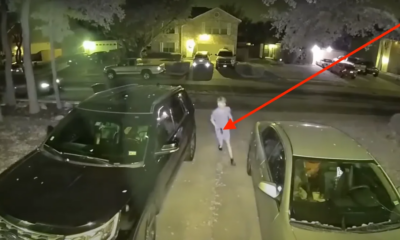
 Tactical9 months ago
Tactical9 months agoMidnight SUV Theft Interrupted by Armed Homeowner’s Retaliation
-
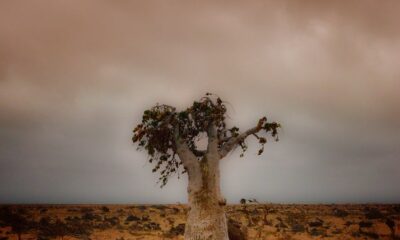
 Survival Stories1 year ago
Survival Stories1 year agoEmily’s 30-Day Experience of Being Stranded on a Desert Island
-

 Preparedness4 months ago
Preparedness4 months agoArizona Engineer’s Headless Body Found in Desert: Friend Charged
-

 Preparedness4 months ago
Preparedness4 months agoBoy Saves Dad from Bear Attack with One Perfect Shot
Suzie Wi
July 21, 2024 at 11:22 pm
Sounds like these two officers need to spend some time on the shooting range.
Justin
July 21, 2024 at 11:30 pm
18 is not a juvenile and he’s lucky he’s still on the green side of the grass
DanC
July 21, 2024 at 11:56 pm
Theft in the night, our laws cover that, bang, bang. The SS agent needs some target practice…
Gerald Hallman
July 22, 2024 at 1:12 am
These were identified as deputy US marshals not “private “ security personnel. If they were deputy marshals then they had legal right to carry. There needs to be more information about the individuals that were involved. Were they actually hired to protect Justice Sotomayor as Deputy Marshals on private duty. As a US Marshal they are allowed to carry since their guns were described as a service weapon. So the questions you asked are inaccurate.
Dr. Caligary
July 22, 2024 at 1:52 pm
So exactly how many shots were fired that did not hit their targets? Black fired multiple shots and one hit the carjacker in the mouth. Sounds to me these two need to go to the range and re-qualify!
don
July 22, 2024 at 3:19 pm
Too bad the perp was not killed. We will now spend millions trying, convicting, housing this creep for years. Death is cheaper – and more instructive.
Old Man
July 23, 2024 at 12:30 pm
“In most U.S cities, juveniles spend the summer hanging out with their friends, working summer jobs, visiting family members. In DC, juveniles carjack.”
Welcome to Democrat Washington D.C.
Jack
July 23, 2024 at 6:08 pm
She should have just sat on the perp. It would have squashed him quite sufficiently.